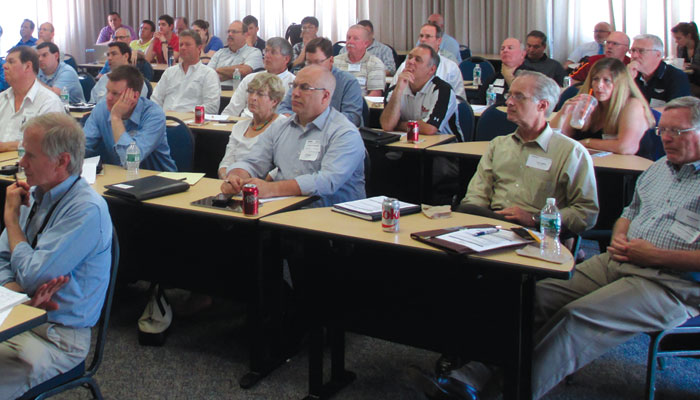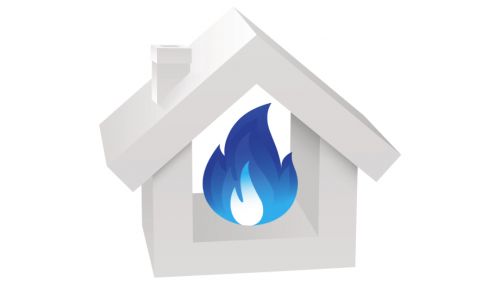All
NORA Develops Research Agenda

More than 40 participants from various corners of the heating oil industry gathered in New York last month to help the National Oilheat Research Alliance (NORA) formulate a research and development agenda for the next few years.
NORA hosted the two-day Research Planning Meeting at Brookhaven National Laboratory, on Long Island, to bring heating oil marketers, manufacturers, biofuel producers, fuel quality specialists and others into the planning process. The event was hosted by Brookhaven researcher Dr. Thomas Butcher and NORA President John Huber.
The Alliance has a robust budget for research under its new charter, which was approved by Congress in February. The new charter requires the Alliance to allocate no less than 30 percent of its annual budget to research, development and demonstration of new Oilheat products, systems and solutions to benefit the 7 million homes and businesses that use heating oil. The Alliance has a five-year charter that extends to 2019.
“NORA had made great strides on its last research plan, and having a well thought out plan with a range of inputs was the best way to ensure we responded to the needs of the industry and its customers,” Huber told Oil & Energy. “This conference will provide us with a roadmap of the type of research that we should accomplish. Thus, we will reach out to the community for potential research partners who will be able to accomplish the tasks that we identified as important.”
Industry Charts Its Own Course
NORA Chairman Ed Noonan told the group that by developing research priorities together, industry participants would give NORA a clear understanding of how to proceed in order to best serve the industry. “We must focus on the task we have and the constituencies we must satisfy,” he said. “How can our research deliver improvements for the customer?”
Research can also help the industry improve fuel quality and prepare leaders to engage effectively with policymakers and regulators, he said. The research needs to benefit the industry and to demonstrate the effectiveness of the Alliance in serving heating oil consumers. “We must make sure that when we go back for reauthorization we have a good record and can describe the great things we have done,” Noonan added.
Richard Sweetser, who consults with NORA on research and development, said the Alliance needs to develop “good, solid ideas” that can be boiled down to a strategic research plan. He said NORA will have about $10 million to spend on R&D in the next five years. “If we spend $10 million, we’d better have $10 million in good results to show.”
Bioheat® and Public Policy
Fuel quality and biofuel blending have been important focal points for NORA in the past and will likely remain prominent in the research agenda, according to Sweetser. He pointed out that NORA succeeded in securing ASTM approval for use of B5 (95 percent petroleum and 5 percent biodiesel) in all oilheating appliances and said the Alliance is now pushing for similar approval of B20. Steve Howell, Technical Director for the National Biodiesel Board, said ASTM committee members are voting on a B20 proposal now, and the group could finalize a new standard as early as this fall.
Sweetser said policy makers evaluate energy sources on the basis of greenhouse gas emissions, and a B20 Bioheat blend is equivalent to natural gas in even the least favorable comparison, which considers indirect land use. “We have to do a good job showing how bioblends can reduce carbon emissions,” he said, noting that the ability to blend renewable biodiesel with heating oil is an important advantage in the competitive struggle.
Industry consultant Bob Hedden asserted that many public policymakers don’t even understand that biodiesel is a renewable fuel. He recommended that heating oil associations join various renewable energy associations to help build momentum for Bioheat® fuel, because state policies are more likely to support heating oil once policymakers view the industry as a renewable energy provider. “Once you fit in that magic box, you’re golden,” he said.
The biodiesel industry stands ready to help heating oil marketers in whatever way the industry prefers, according to NBB’s Howell. “Where do you as an industry want to go? If you want to target B100, we’ll help you,” he said. Sweetser urged the group to consider whether there is an incremental blend ratio between B20 and B100 that the industry should target as a long-term goal.
Butcher, the Brookhaven-based researcher who has assisted NORA on a variety of research projects, said that intensive research on blends of heating oil and biodiesel has revealed virtually no problems at any blend level. “With regard to higher blend levels, it’s not a question of if [the blends work well] but of the timeframe. How quickly and aggressively do we want to move?”
Motivating Customers
Another topic receiving a lot of discussion was the need to demonstrate the energy savings potential of new oil-fired heating equipment and motivate customers to upgrade. Roger Marran, President of Energy Kinetics, pointed out that the actual savings from an Oilheat system upgrade are often 25 percent or greater. Meanwhile, the U.S. Department of Energy continues to publish AFUE appliance ratings that imply savings in the range of only 2 to 3 percent, based on the ratings on the appliance labels.
NORA addressed this problem a few years ago by creating the Fuel Savings Analysis (FSA) calculator and distributing it publically to help marketers demonstrate the actual savings potential of an Oilheat system upgrade. The calculator uses laboratory-based data on the performance of actual systems to demonstrate savings potential. For example, a contractor can choose a system from the database that closely resembles a customer’s present system and then calculate the potential energy savings from upgrading to a modern system, based on actual results. Marran said that many Energy Kinetics’ contractors use a modifed version of the FSA software and find it very effective in equipment sales. “Uncovering that for customers is very dynamic,” he said.
After briefing the participants on NORA’s plans, the leaders divided them into six groups by topic and assigned them to identify top priorities in that topic area. The groups met for about two hours and developed priorities, which they then shared with the group as a whole. Following all the group presentations, the six priority lists were posted on the wall, and participants used stickers to mark the topics they considered the most important for NORA research and development.
The six groups were Biofuels, Combustion & Atomization, Controls & Emerging Technologies, Low-Cost High-Efficiency Equipment, Fuel Quality and Documentation of Field Performance.
Some of the priorities identified by the breakout groups were as follows.
Biofuels
- Target B50 by 2030 and B100 by 2050
- Provide technical information and climate change data to state energy officers and stakeholders
- Develop cloud point and cold flow information
- Perform technical work to support a higher ASTM specification than B20
- Address myths about biofuel and provide data sheets and handouts for policymakers, consumers, real estate agents and others
- Leverage strategic partnerships
Combustion & Atomization
- Sensors and diagnostic tools for remote system diagnosis
- A burner suitable for any bioblend up to B100
- Feasibility study of novel fuel atomization technologies
- Modulating burners
Controls & Emerging Technologies
- Common glossary for heating oil and appliances
- Combustion monitoring
- Self-powered systems for improved resiliency during power outages
- Validation of retrofit options
- Self-learning systems
- NORA advanced technology monitoring
Low-Cost High-Efficiency Equipment
- FSA calculator enhancements
- NORA “stamp of approval” for Oilheat companies
- IBR-like testing for Oilheat appliances
- Tankless coil cost analysis for options to improve efficiency
- Dilution venting system for near condensing or fully condensing equipment
- Retrofit options, fuel economizer and controls upgrade
- Oil-fired whole house generator
- Low-cost near condensing boilers
- ULS-specific heat exchangers
- Extended service intervals
- Lower-cost system components
Fuel Quality
- Best practices manual and quality control programs covering housekeeping, water and contamination
- Identifying characteristics of ultra low sulfur heating oil and bioblends
- Quick, low-cost method to assess fuel quality, including the percentage of biodiesel
- Emerging issues assessment, covering lubricity, corrosion and ultra low sulfur heating oil
Documentation of Field Performance
- Develop “smart meter” technology for instant results and more efficient deliveries
- Make FSA calculator more useful
- Develop powerful fuel use tracking/saving tools that are simple to use, with a goal widespread adoption
NORA will evaluate the participants’ feedback to help develop the research agenda. Research & Development funds will be allocated based upon careful review by the NORA Executive Board, Board of Directors and the Research & Development Committee, according to Huber.
“We will have the research agenda ready for public consumption and comment in late June,” Huber said. “From there we will finalize the report in late summer, and then solicit research ideas and proposals in early fall. Hopefully we can have a new round of large-scale research projects in the pipeline in late fall.”
Related Posts
 The Possibilities of Renewable Propane
The Possibilities of Renewable Propane
Posted on March 13, 2024
 Propane Can Do That
Propane Can Do That
Posted on March 12, 2024
 Take Action and Take Control of Your Future at Industry Summit VI and Visions ‘24
Take Action and Take Control of Your Future at Industry Summit VI and Visions ‘24
Posted on March 11, 2024
Enter your email to receive important news and article updates.

